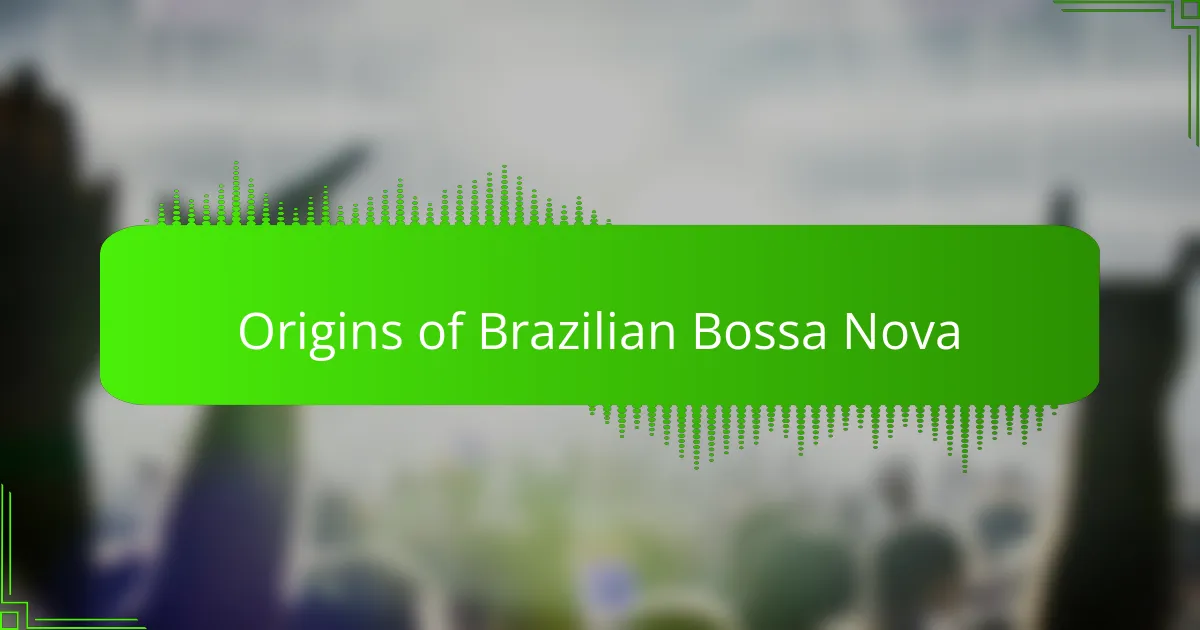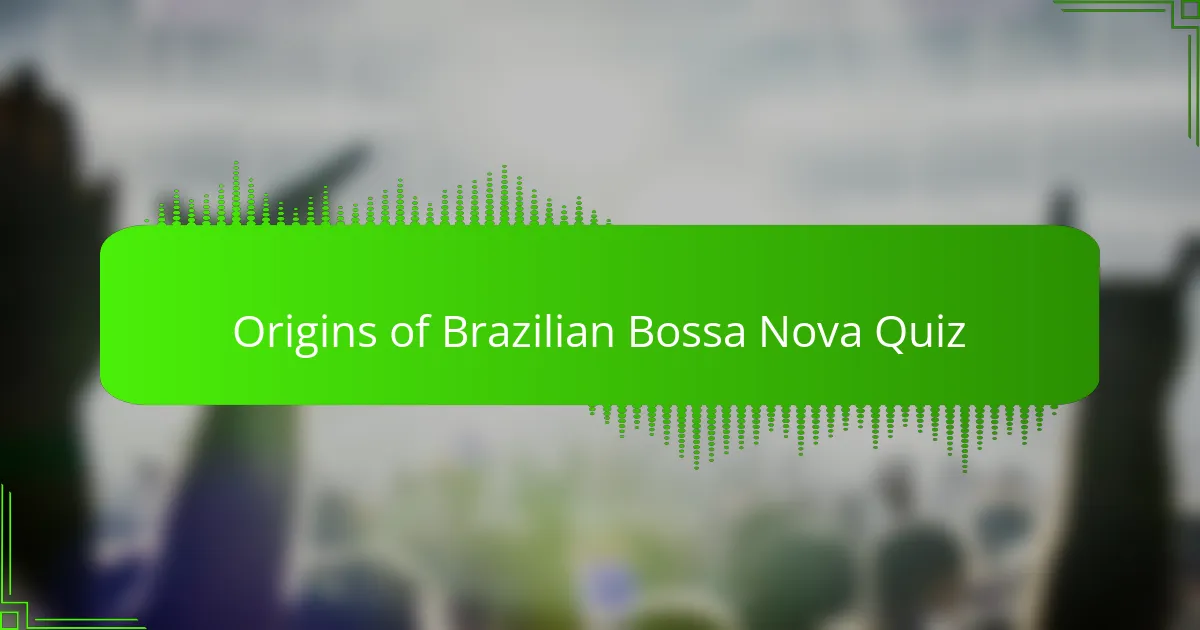
Congratulations on Completing the Quiz!
You’ve just finished the quiz on the captivating origins of Brazilian Bossa Nova. We hope you enjoyed the journey into this iconic music genre. This quiz allowed you to discover key milestones, influential artists, and the cultural context that birthed this unique sound. Whether you learned about the rhythm of Bossa Nova or the blend of samba and jazz that defines it, we trust you found it insightful.
Through your exploration, you may have uncovered how Bossa Nova influenced music both in Brazil and around the world. From the smooth melodies of João Gilberto to the poetic lyrics of Vinicius de Moraes, the quiz highlighted how these elements came together to create an enduring legacy. Each question aimed to deepen your appreciation for this genre and its impact on music history.
Now that you’ve completed the quiz, we invite you to dive deeper into the subject. Check out the next section on this page, where you’ll find more detailed information about the origins of Brazilian Bossa Nova. This section promises to enrich your understanding and appreciation of this beautiful art form. Keep exploring the world of music with us!

Origins of Brazilian Bossa Nova
Introduction to Bossa Nova: A Musical Movement
Bossa Nova is a Brazilian music genre that emerged in the late 1950s. It blends samba’s rhythmic elements with jazz’s harmonic sophistication. Key figures in this movement include João Gilberto and Antonio Carlos Jobim, who were instrumental in popularizing its unique sound. This genre captures the essence of Brazilian culture, emphasizing a relaxed yet intricate musical style.
The Cultural Context of Bossa Nova’s Emergence
Bossa Nova arose during a period of socio-political change in Brazil. The 1950s saw urbanization and a shift towards modernity. Artists associated with Bossa Nova reflected these changes through their music, seeking to resonate with a new, younger audience. The genre became a voice of optimism in post-war Brazil, intertwining traditional Brazilian sounds with international influences.
Key Influences on Bossa Nova Music
The primary influences on Bossa Nova include samba and American jazz. Samba provided the rhythmic foundation, while jazz introduced new harmonies and improvisational techniques. Artists like Charlie Parker and Miles Davis significantly impacted Bossa Nova musicians, broadening their musical vocabulary. This fusion created a sound that was distinctly Brazilian yet universally appealing.
Prominent Artists and Their Contributions
João Gilberto is often credited as the father of Bossa Nova. His innovative guitar techniques and soft vocal style defined the genre. Antonio Carlos Jobim was another key figure, known for composing many of Bossa Nova’s iconic songs, such as “The Girl from Ipanema.” Other notable artists include Astrud Gilberto and Vinicius de Moraes, who expanded the genre’s reach internationally.
Bossa Nova’s Global Impact and Legacy
Bossa Nova gained international fame in the 1960s, influencing musicians worldwide. The genre’s smooth rhythms and melodies appealed to audiences across various cultures. It laid the groundwork for future Brazilian genres and continues to inspire contemporary musicians. Bossa Nova remains a significant cultural export, representing Brazilian artistry on the global stage.
What is the origin of Brazilian Bossa Nova?
Bossa Nova originated in the late 1950s in Brazil, primarily in the neighborhoods of Ipanema and Copacabana in Rio de Janeiro. It blends samba with jazz influences, characterized by its smooth, laid-back style and sophisticated harmonies. The genre emerged as a response to the socio-cultural changes in Brazil, and artists like João Gilberto, Tom Jobim, and Vinicius de Moraes played pivotal roles in its development.
How did Bossa Nova gain popularity?
Bossa Nova gained popularity through its unique sound and the influence of global music trends, particularly jazz. The release of the album “Chega de Saudade” by João Gilberto in 1959 is often credited with igniting the Bossa Nova movement. The song “Garota de Ipanema,” composed by Tom Jobim and Vinicius de Moraes, further propelled Bossa Nova into the international spotlight, frequently covered by numerous artists worldwide.
Where did Bossa Nova originate?
Bossa Nova originated in Brazil, specifically in the coastal neighborhoods of Ipanema and Copacabana in Rio de Janeiro. These areas were vibrant cultural hubs in the 1950s, where artists, musicians, and intellectuals gathered, fostering a creative environment that contributed significantly to the birth of Bossa Nova.
When did Bossa Nova first emerge?
Bossa Nova first emerged in the late 1950s, with its roots solidifying around 1958. It gained traction during the following years, particularly in 1959 with the release of key albums and hit songs, establishing itself as a defining genre of Brazilian music. The movement continued to evolve throughout the 1960s, reaching audiences beyond Brazil.
Who were the key figures in the development of Bossa Nova?
The key figures in the development of Bossa Nova include João Gilberto, known for his innovative guitar style and soft vocals, Tom Jobim, who contributed significantly as a composer and musician, and Vinicius de Moraes, a poet and lyricist. These artists, along with others, created the foundational works that defined the Bossa Nova genre.

